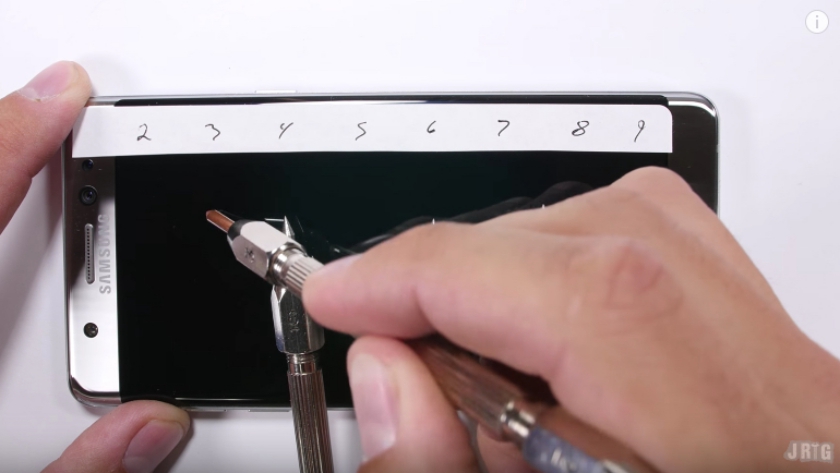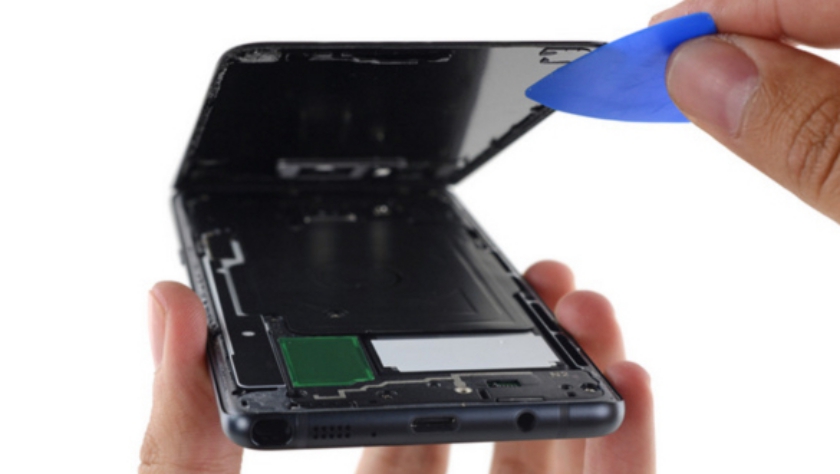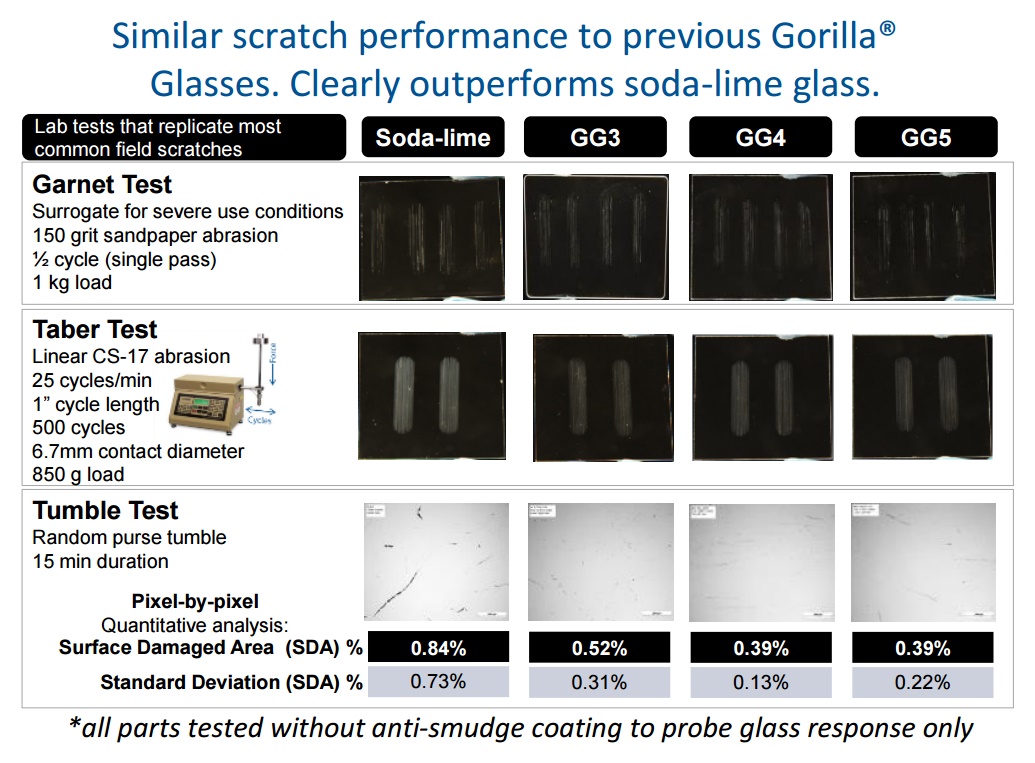Affiliate links on Android Authority may earn us a commission. Learn more.
Corning responds to that worrying Galaxy Note 7 scratch test video

You’ve likely seen the video: Zack from JerryRigEverything performing his now-familiar durability test on the Samsung Galaxy Note 7. Surprisingly, he appears to leave visible scratches on the device’s Gorilla Glass 5 with a metal pick that rates a 3 on Mohs scale of hardness – “only one step above plastic,” as Zack notes in the video. A new glass from Corning that appears to scratch much more easily than its predecessor is admittedly hot news, but as is often the case, the “scandal” may have gotten blown a little out of proportion.

For some context, in Zack’s previous videos on devices typically using Gorilla Glass 4, it usually takes a 5 or 6 hardness pick before scratches occur. But in the Note 7 video, non-removable marks are visible on the screen from a pick as low as 3. Based on the video evidence, many have jumped to the conclusion that increasing Gorilla Glass 5’s shatter-resistance has come at the cost of weakening its scratch resistance. Not being a materials scientist myself, I reached out to Corning for their take on what the video seems to show.
I spoke with two of Corning’s senior spokespeople, Jaymin Amin, Corning’s vp of technology, and Jon Pasansky, Corning’s business technical director for Gorilla Glass. For starters, and as you may have already guessed, concerns were raised about the reliability of the test itself.
The test that was conducted in the video is not a bonafide industry test. It's using Mohs hardness picks but it's in an uncontrolled manner.
Amin noted, “the test that was conducted in the video is obviously not a bonafide industry test. It’s using Mohs hardness picks but it’s in an uncontrolled manner. We also don’t know a whole lot about what loads the person has used. Whether those loads are changing as he goes through the testing.”
I argued that Zack has performed this test over 30 times and that even outside a laboratory setting, there must be at least some degree of consistency in his approach and execution. The idea was shut down immediately, with the (apparently obvious) fact that all glass falls between a Mohs hardness of 5-6, something which Pasansky told me “has been validated several times during the development process here at Corning.” So a Mohs pick of 3 cannot scratch glass with a hardness of 5 or 6. So far so busted.
A Mohs pick of 3 cannot scratch glass with a hardness of 5 or 6.
So if the Gorilla Glass 5 in the video is indeed a 5 or a 6 on Mohs scale of hardness, what gives? The answer is actually quite simple, and one that probably should have been self-evident. As Amin explained:
The hardness pick that was used in the video was a 3, that’s considerably softer than the glass material. Oftentimes when you have a softer material like that, and depending on what kind of loads you have used, you tend to see material transfer on the test substrate.
Material transfer on the test substrate is not necessarily a scratch but it can appear to the untrained eye as a pretty visible scratch. We don’t know whether or not that is what is being seen in the video. Certainly in the testing we’ve done internally, we don’t see that issue at all with similar picks on the Mohs hardness scale.
Pasansky expanded by saying, “We have conducted controlled pick hardness tests on GG5 and we have demonstrated that this material transfer phenomena can occur. It is characteristic of the lower pick hardnesses during the tests.” So, if Corning’s theory is accurate, what we’re likely seeing in the video is actually the metal pick “rubbing off” on the glass material, not the pick scratching the glass.
What we're likely seeing in the video is actually the metal pick “rubbing off” on the glass material, not the pick scratching the glass.
But the video certainly seems to show progressively worse scratches as the pick hardness increases – which would be logical if indeed the pick is scratching the glass. So if what we’re seeing is a soft material being transferred onto the glass, shouldn’t the effect become less noticeable as the picks become harder? Pasansky explained:
“It’s a function of the difference in the hardness of the materials, but in particular the load is very important. So you could have a lower hardness pick with a much higher load and still achieve a condition that would look like a slightly higher hardness pick with a lighter load. It’s a combination of pressure and material hardness differences that exist between the pick and the material that’s being contacted.”

Corning clearly doesn’t want to accuse Zack of rigging the results, but something still didn’t seem quite right to me. Inverting the hardness and load for a pretty banal scandal seemed all too Machiavellian for a YouTuber. To get everything out in the open, I asked if Gorilla Glass 5 was at least as scratch resistant as Gorilla Glass 4. The response felt a little like it dodged the question.
Gorilla Glass 5 is designed to improve the drop performance and not necessarily designed to improve the scratch performance.
“The glass is designed to improve the drop performance and not necessarily designed to improve the scratch performance,” Amin told me. He went on to say, “When we consider all hardness tests, GG5 is actually harder than GG4. Based on our testing, for scratch performance as well as the hardness testing we do that’s widely used in the industry, we believe that GG5 should be performing similarly to GG4.”
The use of the word “similarly” struck me. The same word appears on the product information sheet for Gorilla Glass 5. The kind of promotional material that is typically overflowing with percentage increases and quantifiable numbers. Saying “similar” sounded like Gorilla Glass 5 might not be as scratch resistant as its predecessor, so I asked again: is Gorilla Glass 5 at least as scratch resistant as Gorilla Glass 4? The answer: “Yes, that is correct.”
Gorilla Glass 5 is at least as scratch resistant as Gorilla Glass 4.

With all hope of an exciting conspiracy seemingly down the gurgler, I asked if Corning could explain the relationship between scratch resistance and shatter-resistance, to allay any fears about one coming at the cost of the other.
I mentioned a comment I had seen “explaining” that the shock absorbency and flexibility of Gorilla Glass 5 means it is softer and thus more prone to surface abrasions. Once again, Pasansky pointed out the seemingly obvious:
“There might be a misconception in the thought process [about shock absorbency and flexibility]. What we’ve done with GG5 is designed to maximize the damage resistance of the glass itself. What that does is provide additional resistance to the flaws that get introduced during drop events and provide additional retained strength during those drop events so you can have higher drop performance.
That’s slightly different than thinking about it from a shock absorbance or flexibility perspective. It’s actually more about preventing flaws in glass, which is a brittle material, not about making a soft, shock absorbing material.”
The strengthening process achieves greater damage resistance. That's what has contributed to the enhanced drop performance of Gorilla Glass 5.”
Amin continued by saying that “we’ve just continued down the path of improving damage resistance in the glass. The glass is a new composition that, through the strengthening process, achieves greater damage resistance. That’s what has contributed to the enhanced drop performance of GG5.”
Feeling thoroughly out-scienced, I asked if the cleaning cloth Zack uses in the video in an attempt to wipe off the “scratches” would be sufficient to remove transferred pick material.
Pasansky sealed the coffin shut: “It can be very, very difficult to remove metallic material transfer from glass. It is very atypical to see in a field return when we look at scratches of glass, that kind of characteristic, but purely visual, perceived damage that is actually a material on top of the surface.”
So while there may not be a grand conspiracy after all, if a material deposited on top of your Gorilla Glass 5 looks and feels like a scratch to the untrained eye – which I’m sure we all have – does the fact that it’s technically not a scratch matter?
To Corning it obviously does, but to the everyday consumer, a marked up screen is a marked up screen: whether it’s from scratches or material transference. So to avoid (what may appear to be) display glass damage on your phone, buy a case, get a screen protector and please, avoid scratching your new Galaxy Note 7 with a soft metallic pick.
Do you think we’re seeing material transference? Will you put a screen protector on your Note 7 just in case?
Note: Edited incorrect spelling of names. Also, for those that think Corning is trying to pull one over on consumers, rest assured, if they are, this will all come out eventually. Me being out-scienced in this instance won’t change that.